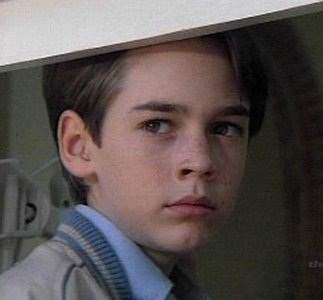Throughout the long history of fiction, androids and gynoids – artificial men and women – have been a common element. When included as tertiary characters they are often symbols for ‘the other’. When treated as protagonists, they fill the tale with themes of the roles and definitions of humanity. Thus, this series is taking a close look at these artificial people. Today we’re looking at D.A.R.Y.L.

D.A.R.Y.L. is the eponymous android from the 1985 film. He’s a very clear example of a Pinocchio figure. He even resembles a small child, being biologically indistinguishable from a normal 10 year old boy.
According to the the story, he’s a biological machine created in a lab as a prototype super-soldier as part of the Data-Analyzing Robot Youth Life-form project (thus the name).
It’s stated in the film that he is an experiment in Artificial intelligence, although by modern standards his organic-robot chassis is actually much more impressive than his AI.
When D.A.R.Y.L. was constructed, one of the scientists, in a bout of guilt spurned by the machines child-like appearance, decided to set him free. In the process getting himself killed, and D.A.R.Y.L.’s memories erased. The machine does escape, however, and the military decides, once he’s out, to just let it happen. They have no trouble tracking him, but feel that the outside world is the perfect place to test the android; the perfect environment in which to discover what he is capable of.
D.A.R.Y.L. find his way into a foster home, when parents cannot be found for him, and the bulk of his character development takes place within the scope of a child from the neighborhood, who finds himself in a position to teach D.A.R.Y.L. what it means to be a ten year old boy. During this time, D.A.R.Y.L.’s android abilities is begin to manifest, including his extraordinary strength and reflexes.

In a particularly memorable scene, D.A.R.Y.L. is able to wirelessly hack what seems to be an Atari 130XE, increasing the clock-speed to match his reflexes. Later he perfectly performs dangerous stunts in a car, after only having watched them performed on television.
The challenge for the character escalates when the government comes to claim him, pretending to have found his real parents. They then reveal their plan to him, and return his memories, so that he can be debriefed regarding his time spent among humans.
This is when the scientists discover that he’s able to simulate human emotions much more closely than they ever intended, making him useless as a super soldier.
Wishing to scrap the project, the military orders his destruction, and a pair of scientists helps him escape once more. This time he manages to outrun their ability to track him by escaping in a military aircraft. He uses the craft to return to his new family in the suburbs, and fakes his death by ejecting just as the plane explodes.
When the family finds him, face down in a lake, he is completely deactivated. Fortunately, one of the scientist is able to repair him without alerting the military.

D.A.R.Y.L. is most interesting as a Pinocchio figure because of this final subversion of the formula. He desires the life of a “real” boy, and he goes on his quest to achieve that real life, but when he finally proves his humanity by making a calculation mistake which results in his own death, that status is taken away from him by his revival.
The ability to return from the dead is the most inhuman trait possible in literature, and is a certain symbol for his continued lack of realness. In the end, he’s still just a very sophisticated robot, one which can even be repaired and revived hours after a forced deactivation.
In the end, D.A.R.Y.L. is returned to his family, but we get no indication how successful his new life is. We don’t know for example if he manages to hide his abilities from the rest of the world. We don’t know if he ever ages.
If he does, can he ever die? Looked at one way, this could be a neat origin story for a superman figure. Looked at another way, it’s the beginning of a very sad existence for an immortally young emotional outsider.






